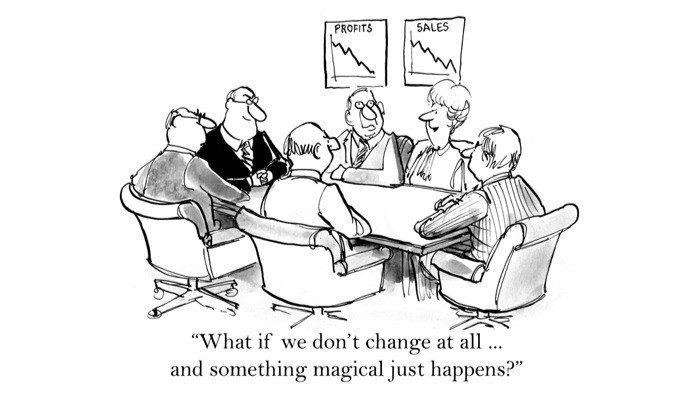When founders talk about culture change, they often start with good intentions. They want to build something more grown-up, more values-led, less reactive. More like the business they thought they were building in the first place.
So they look for a structured approach – a tried-and-tested methodology to help them shape their organisation into something better.
But here’s the challenge: most of the popular methods for change – especially in culture or people practices – were built for much larger organisations, often ones with layers of hierarchy, thousands of employees, and a different pace of change.
The methods are logical and well researched. They often have catchy acronyms. But they may not be what your business actually needs.
Karate in the boardroom
A few years ago we were invited by a CEO client to be present at a pitch by a company specialising in large scale transformation. The client wanted our view on the recommended approach.
We sat around a very formal boardroom table as the would-be suppliers filed in to do their presentation. One of the account managers was carrying a piece of wood about 30 cm square, and everyone eyed it suspiciously.
To cut a long story short, by the end of the presentation the CEO’s obliging PA had been ‘volunteered’ to tell us all her ‘limiting beliefs’. These were then written in marker pen on the wood and she was invited to karate chop it to ‘break through her barriers’.
By the time she managed it on the third attempt we had all sunk low in our chairs, and the CEO was busying himself making coffee…
For us, the incident demonstrated again that there’s a time and a place and a catalyst for transformation. If you get it wrong, all you will get is resistance.
Frameworks can be helpful – but they’re not the work
There’s nothing wrong with frameworks or methodologies. Used well, they can help you:
- Understand complex issues more clearly
- Communicate goals and changes more effectively
- Build alignment across different teams or functions
But here’s what methods can’t do:
- Replace human judgement
- Get people talking honestly when trust is low
- Build relationships that heal silos
- Lead your people through a tough emotional journey
That part is the real work. And it’s usually messier, slower, and more adaptive than any tidy model might suggest.
Your organisation isn’t broken. It’s just human.
Many structured change models are based on a core assumption that the organisation is a machine that can be fixed.
But your organisation isn’t a machine. It’s a living, breathing social system, shaped by people and relationships and history. What works in one culture won’t necessarily work in another. Especially if your people are still reeling from a period of rapid growth, reorganisation, or leadership change.
So if your culture change plan feels like pushing wet spaghetti up a hill, it may not be because your people aren’t ready. It may be because the method doesn’t fit.
Start where you are – not where the textbook says you should be
Culture change doesn’t start with a roadmap. It starts with noticing what’s going on. Here are some useful starting points for founder-led businesses:
- What’s not working? Be honest about the behaviours, habits or norms that need to shift.
- What’s already good? Don’t throw out the soul of the business just because it’s got a bit disorganised.
- What are you hearing – and avoiding? The things people talk about off the record are often the most important signals.
- What relationships need rebuilding? Trust is the oil of change. Without it, even small changes will stall.
You don’t need a grand launch. You need to start the right conversations in the right places – and keep having them.
Some principles that tend to work better in SME cultures
If you’re looking to make cultural change stick in a mid-sized business, here are some shifts worth making:
- From roll-out to co-creation Involve people early. Don’t impose a vision of change – build it together.
- From top-down to peer-led Find and support your informal influencers. Change spreads faster when it’s modelled by peers, not just senior leaders.
- From project to practice Culture change isn’t a project with an end date. It’s a series of new habits, conversations and choices.
- From certainty to curiosity People trust leaders who are thoughtful and open, not those who pretend to have all the answers.
Final thought
If you’re looking to reshape your culture, the key question isn’t which model you’re using.
It’s whether you’re choosing methods that serve your business, or trying to squeeze your business into someone else’s framework.
There’s no one-size-fits-all approach to culture change. But with the right conversations, the right people, and the right kind of support, you can build a culture that reflects your values, unlocks your people, and fits the business you’re becoming.
Want to talk it through? Let’s have a proper conversation.
